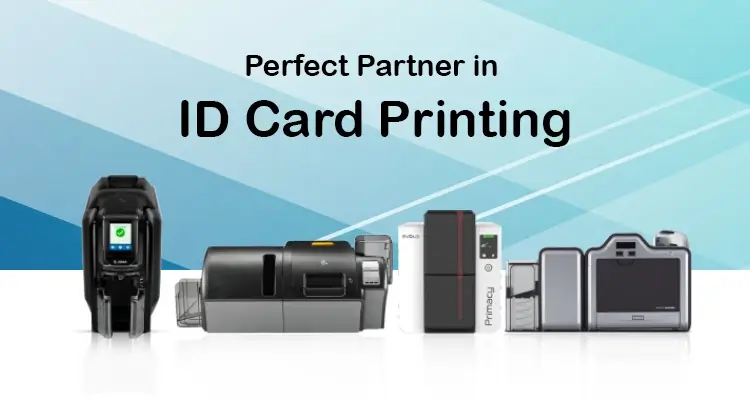Are you thinking about buying an ID card printer for your business or school? Choosing the right one can feel confusing. There are many models, features, and price points. How do you know which one is best for you?
In this guide, we’ll look at the top features you should consider before making a decision. From print quality to security and ease of use, we’ll help you pick the right machine. Let’s break it down into simple parts.
Print Quality Matters
The most important feature of any ID card printer is how good the cards look. You want your cards to look clean and sharp. This means clear text, bright colors, and sharp images. Poor print quality can make your cards look unprofessional and it may also cause barcodes or photos to be unreadable.
Look for a printer that prints in high resolution. A good printer should offer at least 300 dpi (dots per inch). The higher the resolution, the better your card will look.
Also, think about how often you will print cards. If you’re printing hundreds a day, you’ll want a printer that can handle that while still keeping high print quality.
Some printers use dye-sublimation for rich colors. Others use retransfer printing for edge-to-edge designs. Choose the one that fits your needs best. Good print quality helps your cards last longer and look more professional.
Security Features for Extra Protection
Security is a big reason why people use ID cards. Whether you are making employee badges or student IDs, security matters. Some printers offer built-in features to help keep your cards and your data safe.
Look for printers that offer options like holograms, watermarks, or UV printing. These make it harder for people to copy or fake your cards. Some printers can also encode smart chips or magnetic stripes for added security.
Another important feature is password protection. This keeps unauthorized users from printing fake cards. Some models even track who printed each card, which is great for schools or companies with many users.
Security features may cost more, but they are worth it if you want to prevent misuse. Think about how much protection you need based on where and how the cards will be used.
Better security means more peace of mind for your team or organization.
Ease of Use and Simple Setup
You don’t want a printer that is hard to set up or use. A good ID card printer should be easy to install, even for someone who isn’t very tech-savvy. Look for printers with clear instructions and user-friendly software.
Most ID card printers come with software to help you design and print cards. Choose one that works well with your computer and is simple to understand. Drag-and-drop tools or built-in templates are helpful for beginners.
A touchscreen or clear display screen on the printer also makes things easier. It helps you see messages, errors, or updates without checking the computer.
Also, consider how easy it is to change the ribbon or load blank cards. A smooth workflow saves time and lowers frustration.
If you want to explore easy-to-use printers that are also affordable, check out options at Bodno. They offer models that are great for various needs.
Speed and Volume Capabilities
How many cards do you plan to print per day? This is very important when choosing your printer. If you only need a few cards now and then, speed may not matter much. But if you print dozens or hundreds daily, you’ll need a fast printer.
Look at the printer’s card-per-hour rating. Some printers can print up to 200 cards per hour. Others may only handle 50. This depends on the model and how much detail your design has.
Also, consider how long it takes to warm up, print, and cool down. Some printers can print double-sided cards without flipping the card manually. This feature saves time and effort.
Choose a printer that matches your workload. You don’t want to keep staff waiting or create delays during busy times.
Connectivity and Compatibility
Modern ID card printers often offer more than just USB connections. Some allow for Ethernet or even wireless printing. If more than one person needs to use the printer, network access can help a lot.
Make sure the printer you choose is compatible with your operating system. Whether you use Windows or Mac, check the specs before buying. Some printers also work with mobile apps, letting you design and print cards from your phone or tablet.
Also, think about integration with other systems. Can your printer connect with your employee database or school records? This can help you auto-fill card information and reduce manual errors.
The right connections and software support can save time and reduce headaches. They also make your printer more useful in the long run.
Don’t forget to look at what updates or customer support the brand offers, too.
Cost and Long-Term Value
Price is always a big factor, but don’t just look at the upfront cost. Think about how much it will cost to run the printer over time. This includes ribbons, blank cards, and maintenance.
Some printers are cheap but need frequent ribbon changes. Others may have higher upfront costs but are more reliable and cost less to run. Check if the printer uses standard supplies or needs special ones.
Also, look at the warranty and service options. A good warranty can save you money on repairs. Some brands offer customer support or online guides that help solve common issues.
Buying a slightly better printer now could save you more money over time. Think of it as an investment in quality, time, and peace of mind. Choose a model that gives you the best mix of price, features, and support for your needs.
Consider These Features When Buying an ID Card Printer
Buying the right ID card printer doesn’t have to be hard. When you know what features to look for, the decision becomes easier.
Think about print quality, security, ease of use, speed, and cost.
Also, make sure it works well with your system and fits your daily needs. Whether you’re printing employee badges or school IDs, the right printer will help you do it faster and more easily.
Take your time, do your research, and pick the best printer for your budget and goals. The better your choice now, the fewer problems you’ll face later. You should also consider whether this is the right option for you or if finding a company that offers printing services in Tucson, AZ is better.
If you found this guide helpful, check out more of our articles on other helpful topics.



